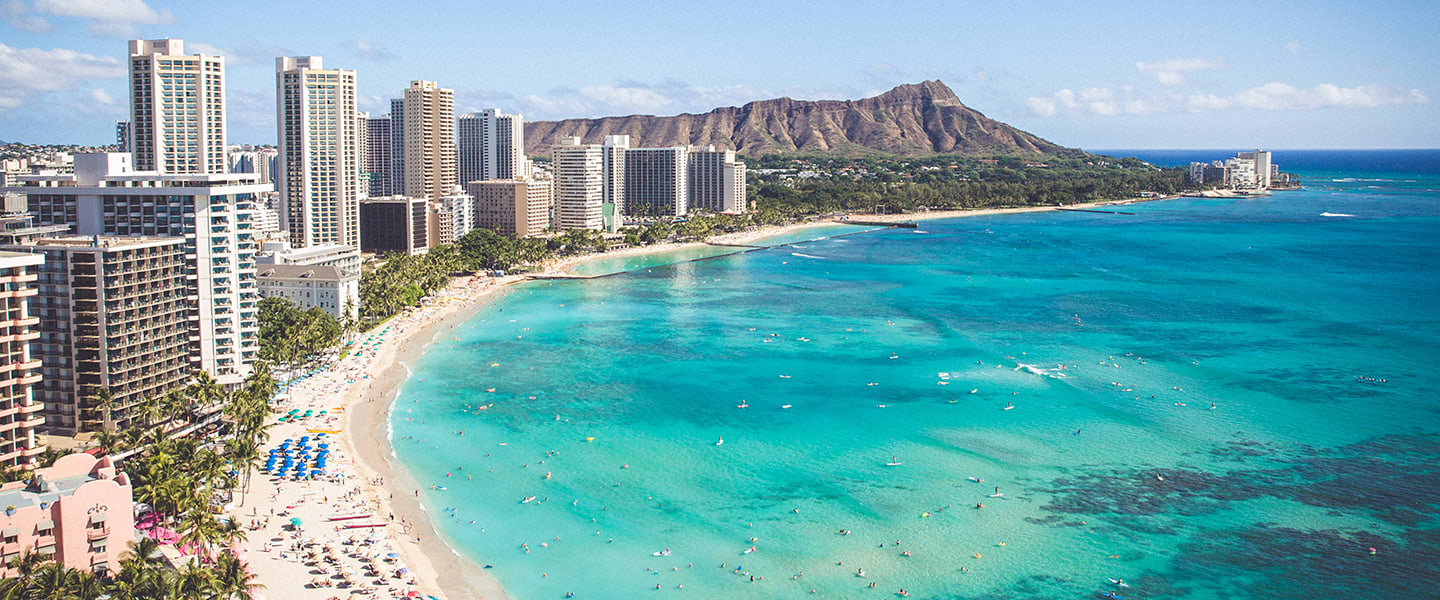Home Care in Hawaii

Overview of Home Care in Hawaii
Nicknamed the “Aloha State,” Hawaii is a tropical paradise known for its white sand beaches, crystal blue waters, majestic volcanoes, and dense rain forests which are home to a plethora of flora and fauna. Hawaii is one of the premier vacation destinations in the United States, making it an excellent spot to retire and relax in the sun. Many seniors enjoy exploring the local culture and historic sites of the islands, especially Pearl Harbor and the USS Arizona Memorial.
The median monthly cost of a home-health aide in Hawaii is about $5,200, according to Genworth. A Place for Mom’s Senior Living Advisors can provide you with a list of home care services in Hawaii to help you find one that fits your needs and budget.
Top-rated Home Care agencies in Hawaii
Right at Home - Aiea, HI
Reviewer Ranking
5.0/ 5.0
(2)We had the service for Right At Home earlier this year, about four visits. At the time we were in shock because my husband was having serious memory loss and disconnecting. I needed help, this is a big...
Senior Helpers of Moanalua - Honolulu, HI
Reviewer Ranking
5.0/ 5.0
(1)After interviewing a few better known companies I found that senior helpers were willing to work with me in formulating " the right fit" in addressing my family's specific needs. I've been very satisfied...
Top-rated Home Care agencies in Kaneohe
See top facilitiesSenior Helpers of Moanalua - Honolulu, HI
Reviewer Ranking
5.0/ 5.0
(1)After interviewing a few better known companies I found that senior helpers were willing to work with me in formulating " the right fit" in addressing my family's specific needs. I've been very satisfied...
Right at Home - Aiea, HI
Reviewer Ranking
5.0/ 5.0
(2)We had the service for Right At Home earlier this year, about four visits. At the time we were in shock because my husband was having serious memory loss and disconnecting. I needed help, this is a big...
Top-rated Home Care agencies in Kapolei
See top facilitiesRight at Home - Aiea, HI
Reviewer Ranking
5.0/ 5.0
(2)We had the service for Right At Home earlier this year, about four visits. At the time we were in shock because my husband was having serious memory loss and disconnecting. I needed help, this is a big...
Senior Helpers of Moanalua - Honolulu, HI
Reviewer Ranking
5.0/ 5.0
(1)After interviewing a few better known companies I found that senior helpers were willing to work with me in formulating " the right fit" in addressing my family's specific needs. I've been very satisfied...
Top-rated Home Care agencies in Honolulu
See top facilitiesSenior Helpers of Moanalua - Honolulu, HI
Reviewer Ranking
5.0/ 5.0
(1)After interviewing a few better known companies I found that senior helpers were willing to work with me in formulating " the right fit" in addressing my family's specific needs. I've been very satisfied...
Right at Home - Aiea, HI
Reviewer Ranking
5.0/ 5.0
(2)We had the service for Right At Home earlier this year, about four visits. At the time we were in shock because my husband was having serious memory loss and disconnecting. I needed help, this is a big...
Top-rated Home Care agencies in Hauula
See top facilitiesRight at Home - Aiea, HI
Reviewer Ranking
5.0/ 5.0
(2)We had the service for Right At Home earlier this year, about four visits. At the time we were in shock because my husband was having serious memory loss and disconnecting. I needed help, this is a big...
Senior Helpers of Moanalua - Honolulu, HI
Reviewer Ranking
5.0/ 5.0
(1)After interviewing a few better known companies I found that senior helpers were willing to work with me in formulating " the right fit" in addressing my family's specific needs. I've been very satisfied...
Top cities in Hawaii for home care
Find home care in other states
Other senior living options in Hawaii
Find assisted living near you
The information contained on this page is for informational purposes only and is not intended to constitute medical, legal or financial advice or create a professional relationship between A Place for Mom and the reader. Always seek the advice of your health care provider, attorney or financial advisor with respect to any particular matter, and do not act or refrain from acting on the basis of anything you have read on this site. Links to third-party websites are only for the convenience of the reader; A Place for Mom does not endorse the contents of the third-party sites.
Please enter a valid email address.
A Place for Mom is paid by our participating communities, therefore our service is offered at no charge to families. Copyright © 2024 A Place for Mom, Inc. All Rights Reserved. Privacy & Terms. Do Not Sell My Personal Information.